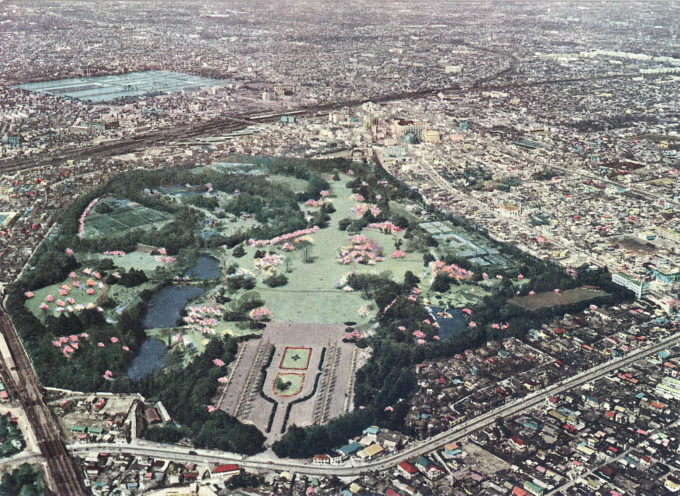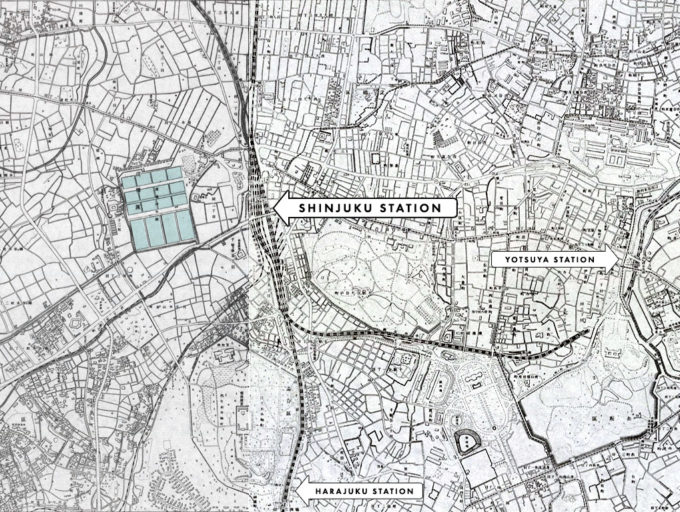
Aerial view of Shinjuku Gyoen and Nishi-Shinjuku water treatment plant, Tokyo, c. 1960. The grounds of Shinjuku Gyoen were originally the daimyo estate of Lord Naitō of Tsuruga during the Tokugawa period. In 1879, after the Restoration, it became an imperial botanical garden. Destroyed during the firebombings of Tokyo in 1945, the grounds were rebuilt and reopened to the public in 1949 as a national park. In the upper left of the postcard can be seen pools of water. From 1894-1965, Tokyo’s water supply was treated at the Yodobashi (aka Nishi-Shinjuku) Water Treatment Plant west of Shinjuku Station. After relocation of the plant in 1965, the former grounds were redeveloped into one of Tokyo’s first “sub-cities” with the 50-story Keio Plaza Hotel, in 1971, becoming the first of a forest of skyscrapers that would be erected on the former treatment plant grounds.
See also:
Shinjuku Gyoen National Garden, Shinjuku, c. 1960.
Yodobashi (Shinjuku), Tokyo, c. 1910.
“Despite being a forest of high-rise buildings today, west Shinjuku is actually one of Tokyo’s younger commercial districts. It was not until the Meiji era (1868–1912) that the scenic village of Tsunohazu began to see serious development.
“Until then, Edo’s water supply had come from the Tamagawa and Kanda aqueducts, but water quality issues meant that a modern purification plant was needed. In 1894, Tsunohazu officially became home to the Yodobashi Water Treatment Plant, which eliminated most of the waterfalls to the east of the shrine.
“Shinjuku grew into a transport hub, and plans were soon drawn up to make it a secondary city center. After the Yodobashi plant was relocated in 1965, the skyscrapers of Shinjuku began to rise, with the Keiō Plaza Hotel leading the way in 1971. In 1991, the Tokyo Metropolitan Government moved its offices to the area, cementing the area’s status as one of the city’s largest commercial centers.”
– Altered Views at a Shinjuku Shrine: “Kumano Jūnisha Shrine at Tsunohazu”, by Kichiya, Nippon.com, 2018


